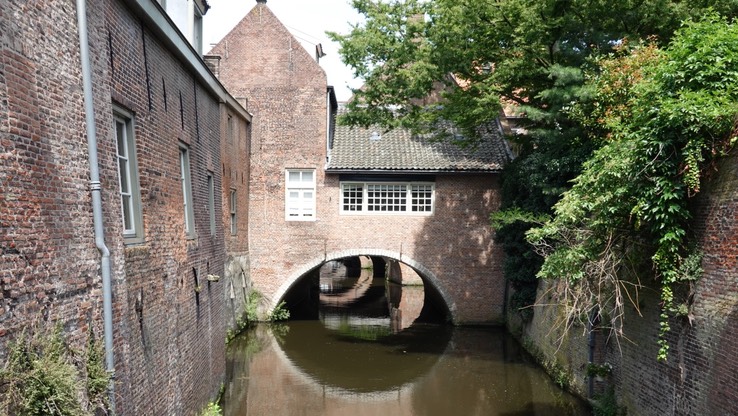 When leaving Utrecht with canapé and windows lowered we squeezed again under the 3,30m bridge which nearly gave Austin a radical “haircut” on the way in. Soon we rejoined the Amsterdam Rhine Canal and travelling south we hit the “Waal”, which is the Dutch name for the Rhine. Last year we avoided this busy river with its high commercial traffic. But this year we wanted to take a slightly different way. Huge barges power along this shipping highway with no regard for sport boats bopping around like nutshells in a giant bathtub! I was relieved when we turned into the less busy Maas heading towards the river Dieze and the town ’s-Hertogenbosch.
When leaving Utrecht with canapé and windows lowered we squeezed again under the 3,30m bridge which nearly gave Austin a radical “haircut” on the way in. Soon we rejoined the Amsterdam Rhine Canal and travelling south we hit the “Waal”, which is the Dutch name for the Rhine. Last year we avoided this busy river with its high commercial traffic. But this year we wanted to take a slightly different way. Huge barges power along this shipping highway with no regard for sport boats bopping around like nutshells in a giant bathtub! I was relieved when we turned into the less busy Maas heading towards the river Dieze and the town ’s-Hertogenbosch. 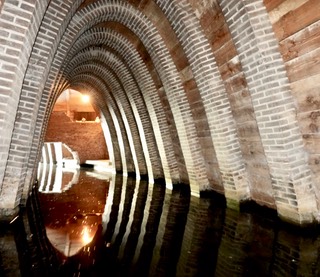
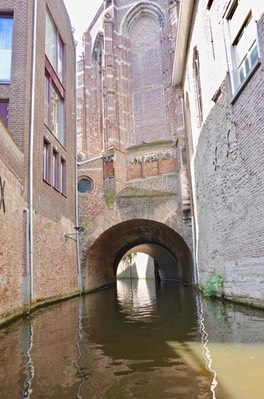
The name with the strange “s” which is an abbreviation of “des Hertogenbosch”, means “the Dukes Forest”. It started off in the early 12th century as a swampy, wooded settlement between two rivers which was owned by the Duke Henry I van Brabant. In 1185 ’s-Hertogenbosch received city rights and was fortified. Small branches of the rivers Dieze and Dommel were captured within the town walls. They were used to transport goods, as catchment of effluence and yes, also for washing and drinking water!
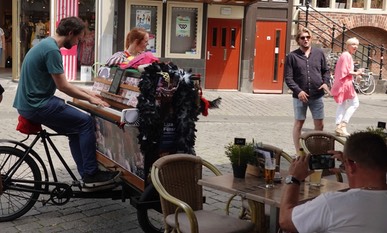
Luckily there was beer! Houses and warehouses opened up to the water, but eventually the town ran out of space and, as it was forbidden to build outside of the town walls, houses were built across the waterways creating many small tunnels. In the 1970s the city started to re-built and restore these tunnels and waterways. Now small cruise boats take tourists on a 50 minute discovery trip along these waterways. From one of the tunnels steps lead right into the old town hall. According to our guide he often drops off couples to be married there, and after asserting that “this is a one way trip”, he quickly leaves before anyone can change their mind.
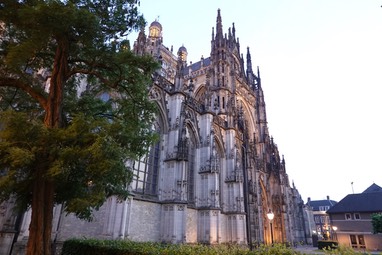
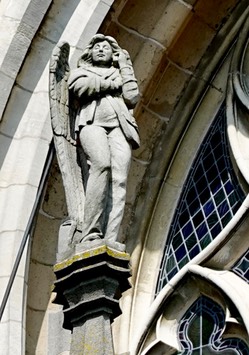
When we emerged from the “underworld”, temperatures were hitting 34 degrees and after a short walk we felt in need of a cool drink. We were enjoying a shandy at one of the market place cafés when a pianist, the piano mounted on a bicycle, and 2 singers pulled up and gave us a lively Lehár rendition. This was a promotion for a free outdoor opera event held on the Parade Square of St. John’s Cathedral that night.
We had visited the beautiful cathedral earlier and had booked a table in one of the restaurants of the square from where we could view the open air opera. The cathedral itself has stunning stain glass windows, but is largely famous for the human and animal figures on the flying buttresses. One of them is particularly memorable. It features an angle holding a mobile phone “with a direct line” to God, an addition made during restoration works by a modern sculptor.
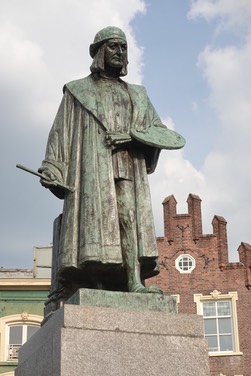
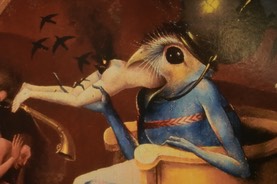
The most famous person of "De Bosch”, like locals tend to call the city, is the 15th century painter Jheronimus Bosch. Nobody actually knows where he was born, but having worked here for many years the town has claimed him as their own. Most of his weird and wonderful works are held in the large museums around the world, but the J. Bosch Art Centre in ’s-Hertogenbosch has replicas of all his creations. 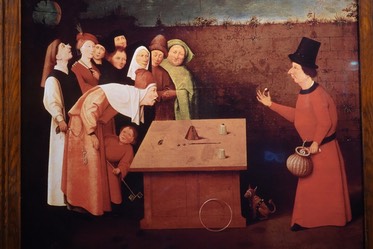
We returned to Parade Square at night time for the fairly unknown Jacque Offenbach opera “Fantasio”. The main character in this comic opera is a common citizen of Munich turning court jester to win the heart of the princess. Scenery and costumes were very creative, some wore tunics in the pattern of the bavarian flag, others had punk-like outfits.
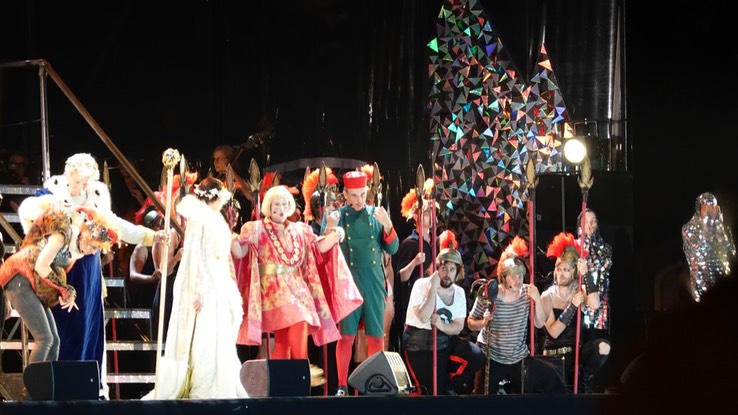 The storyline was as confusing as the costumes but the voices of Fantasio (mezzo soprano) and his princess Elsbeth (soprano), both sung by women, were “fantastique"! As the libretto is sung in French I also had the chance to practise my French comprehension before heading back to France.
The storyline was as confusing as the costumes but the voices of Fantasio (mezzo soprano) and his princess Elsbeth (soprano), both sung by women, were “fantastique"! As the libretto is sung in French I also had the chance to practise my French comprehension before heading back to France.